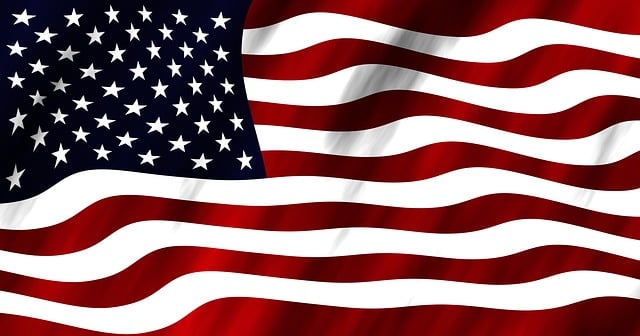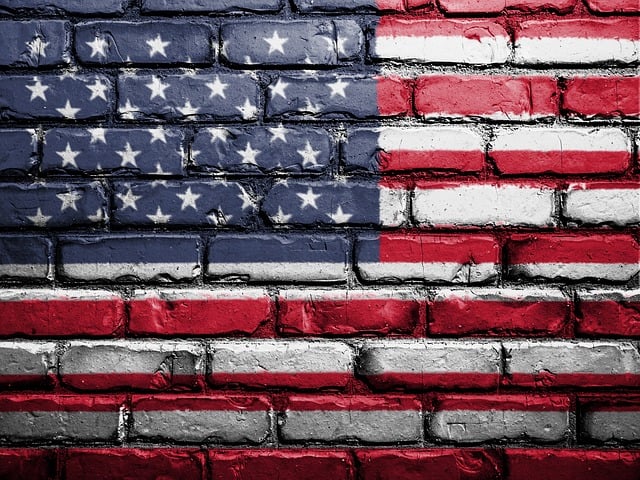The American Eagle and the American Flag are two iconic symbols deeply embedded in U.S. history and culture, embodying the nation's identity, unity, and enduring values. The American Eagle, first adopted as part of the Great Seal in 1782, signifies America's strength, vision, and commitment to freedom, with its spread wings symbolizing readiness to defend the country and its holdings of both arrows (for conflict) and an olive branch (indicating a desire for peace). The American Flag has evolved from a 13-star, 13-stripe emblem to reflect the addition of new states, serving as a powerful symbol of unity and sovereignty across all American territories. Together, these symbols are a testament to America's journey, from its founding to its status as a global influence, and represent the shared heritage and principles that define what it means to be American. They serve not only as emblems but also as daily reminders of the nation's proud heritage and its influential role on the world stage. The American Eagle and Flag are thus central to both national identity and international perception, reflecting America's legacy and its unwavering spirit.
The soaring American Eagle, emblematic of freedom and strength, paired with the resilient stars and stripes of the American Flag, encapsulates the essence of U.S. power. This article delves into the profound symbolism these icons hold, their historical significance, and the cultural impact they wield. From their origins to their representation in art and literature, and their role as ambassadors of national identity on the global stage, the American Eagle and Flag stand as a testament to the United States’ sovereignty and unity. Join us as we explore the rich tapestry of meaning woven into these enduring symbols.
- The Enduring Symbolism of the American Eagle and Flag: A Duo Representing U.S. Sovereignty
- Historical Roots: The Evolution of the American Eagle and Its Aerial Emblem
- Iconic Imagery: How the American Eagle and Flag Embody National Strength and Unity
- Cultural Resonance: The American Eagle and Flag in Art, Literature, and Public Discourse
- Global Perspective: The American Eagle and Flag as Ambassadors of U.S. Power on the World Stage
The Enduring Symbolism of the American Eagle and Flag: A Duo Representing U.S. Sovereignty

The American Eagle and the American Flag are emblematic representations of the United States, each symbolizing different aspects of the nation’s identity and values. The eagle, a powerful and majestic bird of prey, has long been revered in American culture for its strength, vision, and freedom—attributes deeply resonant with the American ethos. As a national emblem since the Great Seal was adopted in 1782, the American Eagle stands as a testament to the country’s vigilance and resilience. Its spread wings signify the nation’s readiness to defend freedom and its territory, while its clutching of arrows and an olive branch reflects the country’s dual role as both a warrior and a peacemaker in international relations.
The American Flag, with its thirteen alternating red and white stripes and blue field of stars representing the then-thirteen colonies, has evolved over time to include new stars and stripes with the admission of new states. This living symbol has flown over battlefields and presidential inaugurations, over Main Street and the halls of Capitol Hill. It represents the country’s unity, its diverse population under one flag, and its sovereignty as a nation. The flag, along with the Pledge of Allegiance, is a daily affirmation of shared values and identity for millions of Americans. Together, the American Eagle and the American Flag are a duo that encapsulates the strength, history, and aspirations of the United States, reminding all who see them of the enduring sovereignty and proud heritage of the nation.
Historical Roots: The Evolution of the American Eagle and Its Aerial Emblem

The American Eagle, a powerful and iconic symbol, has deep historical roots that trace back to ancient times. Initially inspired by European heraldry and classical antiquity, the emblem evolved into a distinctly American representation of strength, freedom, and resilience. As early as the Great Seal Act of 1782, the eagle became a central figure on official government seals, reflecting the young nation’s aspirations. The eagle’s majestic presence in the national emblem symbolizes the federal government’s sovereignty and its watchful eyes over the country. Over time, the design of the American Eagle has been refined, culminating in the version we recognize today, which first appeared on the reverse side of the gold eagle coin in 1795.
Parallel to the evolution of the American Eagle, the American Flag too has undergone significant transformations. Its origins can be traced back to the colonial period when the flag represented rebellion and a break from British rule. The first official U.S. flag, adopted in 1777, featured thirteen stars and thirteen stripes, one for each of the original colonies. As the nation grew, so did the flag, with stars added to represent new states joining the Union. The American Flag became a living chronicle of the country’s expansion and evolution. The combination of the American Eagle and the American Flag, therefore, not only signifies the nation’s power but also its history, unity, and enduring spirit. These symbols have come to encapsulate the narrative of America itself, from its founding to its position as a leading global power.
Iconic Imagery: How the American Eagle and Flag Embody National Strength and Unity

The iconic imagery of the American Eagle and the American Flag stands as a testament to the nation’s strength and unity, deeply rooted in the collective consciousness of its people. The American Eagle, with its majestic wings spread wide, symbolizes freedom, resilience, and the boundless aspirations that define the American spirit. Its regal presence in artwork, public buildings, and the national emblem conveys a sense of power and dignity that reflects the country’s enduring values. Similarly, the red, white, and blue stripes and stars of the American Flag resonate with Americans across the nation, uniting them under a common banner that has flown over historic moments, from the birth of a nation to its greatest triumphs and challenges. This flag, which has become synonymous with national pride, freedom, and democracy, is a visual embodiment of the collective will and shared identity of the American people. Together, the American Eagle and the American Flag form a powerful emblem of unity and strength, reminding citizens of their shared heritage and the principles upon which the country was founded. These symbols, while simple in form, carry immense historical significance and continue to inspire a sense of national cohesion and resolve.
Cultural Resonance: The American Eagle and Flag in Art, Literature, and Public Discourse

The iconic American Eagle and Flag have permeated the cultural fabric of the United States, serving as potent symbols that resonate across art, literature, and public discourse. In visual arts, the American Eagle, with its majestic stature and spread wings, often features prominently, embodying the nation’s spirit of freedom and strength. Artists from various mediums have captured the eagle’s likeness to convey themes of resilience, independence, and national identity. From the powerful sculptures in public spaces to the delicate illustrations adorning children’s books, the American Eagle is a motif that transcends generations and artistic styles.
Similarly, the American Flag has become a recurring subject in cultural expressions. It has been a muse for painters like James McNeill Whistler and Jasper Johns, who have rendered it in different contexts, challenging and redefining its meaning. Literature too abounds with references to the flag, often as a symbol of unity, diversity, and the collective American story. Public discourse frequently invokes these symbols during key moments, such as national events, protests, and public ceremonies, where they serve as visual shorthand for shared values and aspirations. The interplay between the American Eagle and Flag in these diverse cultural arenas not only underscores their significance but also reflects the evolving narrative of a nation continually redefining its identity.
Global Perspective: The American Eagle and Flag as Ambassadors of U.S. Power on the World Stage

The American Eagle and Flag are potent symbols that transcend their mere representation as national emblems, serving as ambassadors of U.S. power on the global stage. The American Eagle, a creature of majesty and strength, has long been a visual embodiment of the nation’s resilience and freedom. Its powerful wings signify the country’s ability to soar above challenges, while its sharp eyes represent vigilance and foresight in U.S. foreign policy. The Eagle’s presence on official seals and military insignia underscores the United States’ commitment to protecting its interests and values across borders.
In parallel, the American Flag, with its thirteen stripes and fifty stars, is a beacon of unity and diversity, reflecting the country’s rich tapestry of states and communities. As it flutters in embassies worldwide, the flag signifies the enduring U.S. presence and influence, acting as a silent yet powerful communicator of American ideals. Its prominent display during international events underscores the nation’s leadership role, particularly within multilateral organizations and diplomatic negotiations. Together, the American Eagle and Flag are not just symbols but are integral to the country’s projection of power and its standing in the international community.
